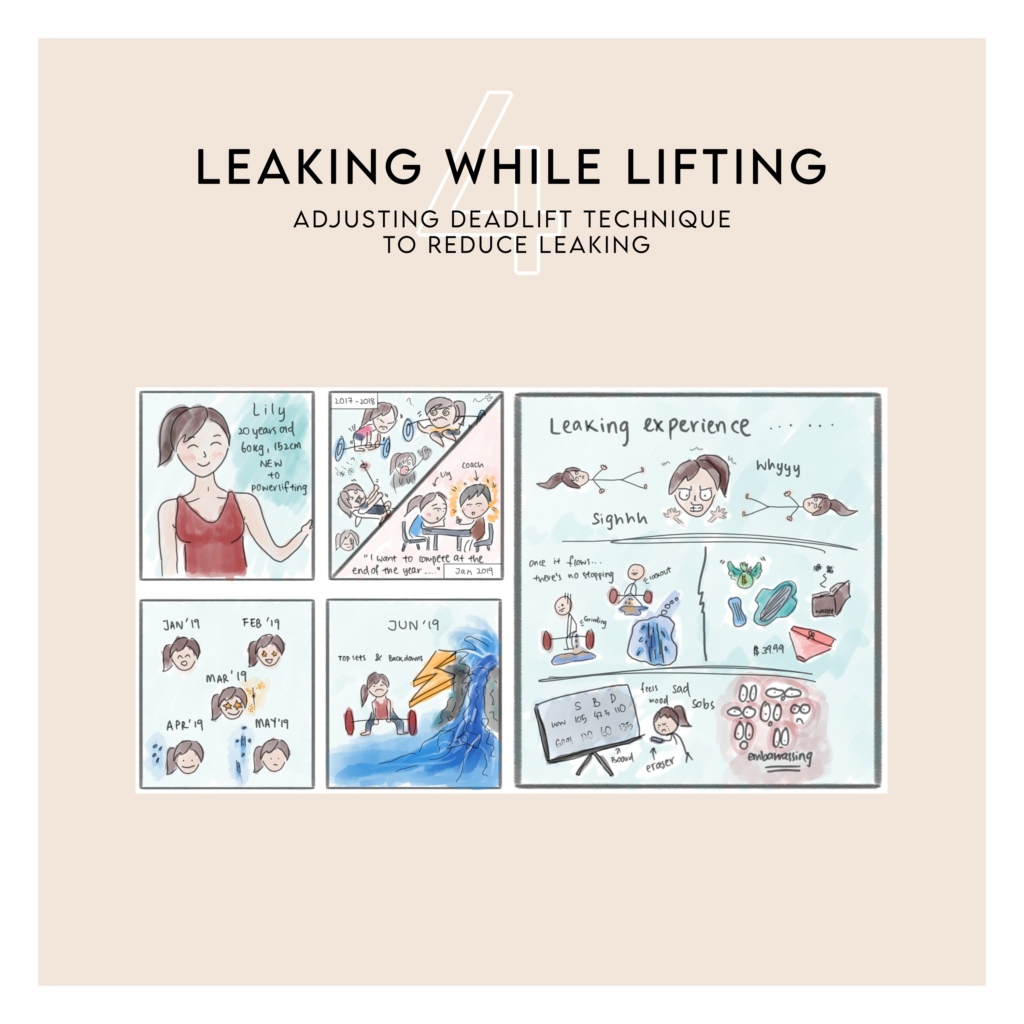
ALEEN TAN
Aleen Tan has been powerlifting for 8 years and competitively for 5. From a humble member of The Gym Nation, she has moved on to make numerous achievements in the sport under the guidance of Ronin Strength Co. Aleen has finished her Undergraduate Bachelor’s Honours degree program in Physiotherapy from the University of Sydney. Her research project was dedicated towards women’s preferences for pelvic floor information to advise future awareness strategies. With many more Women’s Health project ideas, she looks to specialise in Women’s Health Physiotherapy and furthering her studies in the near future.
We have reached the last installation to the Leaking while Lifting series! Thank you so much for reading thus far. Leave a comment if you have any questions or simply just want to have a chat about the downsouth!
In this section, I’ve worked with Jonus Ong to look at how deadlift technique, training programme and training mood can aid in reducing leaking while lifting. These 3 components are long-term prevention strategies as compared to the short-term prevention strategies mentioned in Leaking while Lifting [III].
Due to the amount of content in this section, I’ve decided to split it into 3 different articles for each topic. This article will be focusing on deadlift technique, with the next two on programming and training mood respectively.
To make this article more relatable, we will be analysing Lily’s case study below.
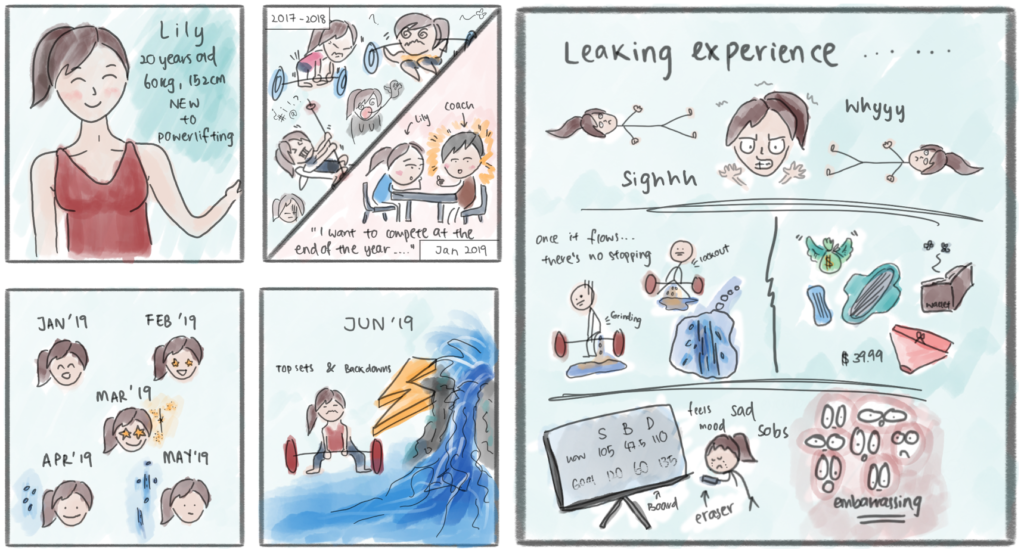
When met with a problem like this (e.g. injuries, leaking, mind block), it would be beneficial to sit down and think of the possible reasons why it could have happened. I know it’s intuitive, but you would be surprised by the things you can think of after you’ve calmed down from a traumatic experience and have had time to reflect. There are a few deductions (hypotheses) that we can make based on Lily’s experience:
- Underdeveloped physical strength. Lily was unable to keep up with the program and weight increments.
- Poor motor pattern. Technique inconsistency and inefficiency for each set and repetition.
- Weight increments were too quick. Drastic increases in training volume and intensity not adapted by Lily’s body yet.
- Poor body recovery from exercise. Body not recovered for next bout of training (not enough sleep/poor diet/trained late the day before).
- Injury around hips. Ongoing injuries and soreness (i.e. Lower back pain).
- Overwhelming emotions. Lily feels distressed about her peeing issue.
While these are some of the factors leading to leaking while lifting, the list is not exhaustive. After identifying and generating the hypotheses, we can then proceed to think of how we should approach and rectify the problems.
First and foremost,
DEADLIFT TECHNIQUE
We can’t fix complex problems without looking at its smaller components. Just like how we can’t fix a blue screen of death without troubleshooting each component of your laptop. Hence, it is paramount that the lifting technique be analysed first if it could possibly be the underlying issue.
“Lily has a habit of gripping and ripping a deadlift to psyche up. Lily has significant lower back rounding (excessive lumbar flexion) and hips wedging/scooping (posterior pelvic tilt) when the bar leaves the floor during deadlift. Lily claims that the floodgates open when she starts to grind her lift and in extreme cases, she experiences streams near lockout.” – Lily’s coach
Deadlift technique would address hypotheses 1 and 2 above. With efficient lifting technique, good motor patterns develop as Lily practices it with each set and repetition. Overtime, the muscles that are engaged for this efficient lifting technique will be adapted and strengthened, ready for more challenging weights the next time. Hence, it is important that Lily also understands this and approaches each repetition with intent and practices good lifting habits.
Lily can improve on her deadlift technique by following two key principles held in both the conventional and sumo deadlift. One can argue that there are 101 instructions out there that teaches people how to deadlift. The How to Deadlift manual by Greg Nuckols is a good resource (136 page document; refer page 22–35). If you want something shorter, the ENSŌ Beginner Series: The Deadlift article is the go-to resource.
When it comes down to reducing pressure placed on the pelvic floor muscles and reducing leaking, the two tips below are important things to take note of.
1. BE PATIENT AND CREATE TENSION BEFORE LIFT OFF
I advise against gripping and ripping, especially for beginner lifters like Lily.
Hip wedging/scooping early in a deadlift often happens when a lifter aggressively pushes their hip in during their deadlift set up. By not generating enough tension around the torso (which includes the back) before the lift off, the lifter puts themselves in a disadvantageous position where the hips start to wedge/scoop in, causing their back to round, even before the bar leaves the floor.
With the back rounded (excessive lumbar flexion) and hips scooped in (posterior pelvic tilt), the intra-abdominal pressure increases and places a huge demand on the pelvic floor to support the organs within the pelvic cavity and reduce leakage. Eventually, the pelvic floor fatigues and leaking happens.
So how do we consciously stay tight and feel tight when setting up for a lift?
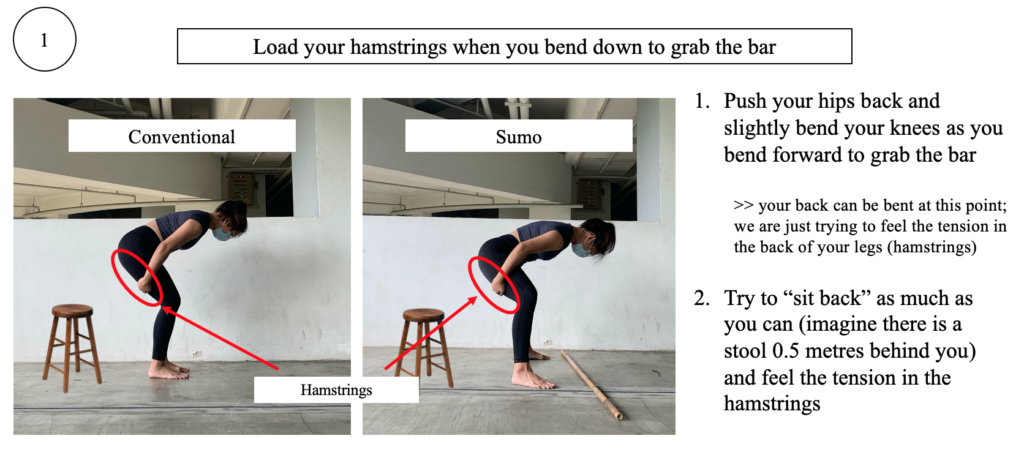
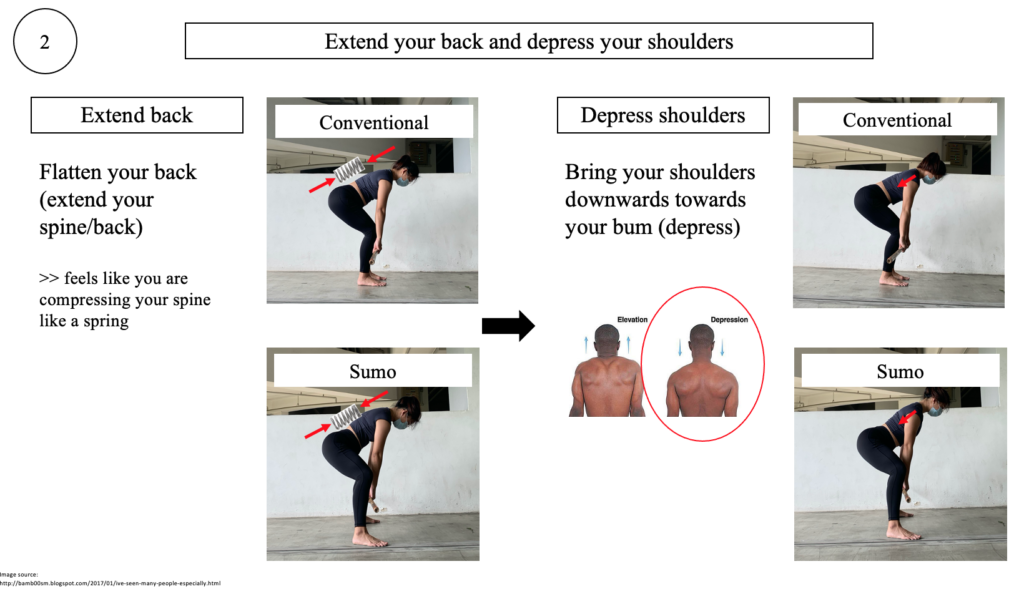
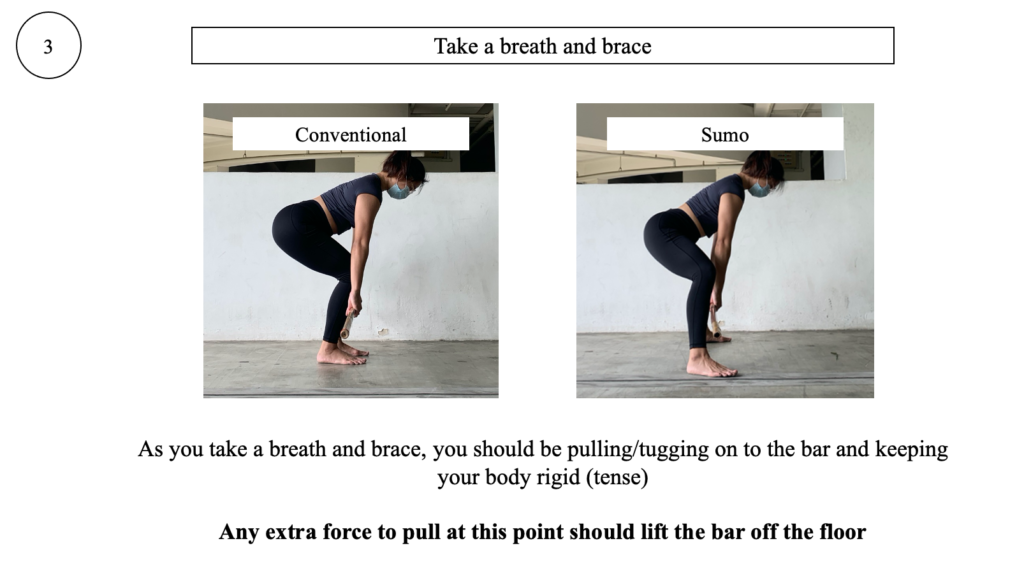
2. MAINTAIN YOUR SHOULDERS OVER THE BAR + PUSH HIPS FORWARD (HINGE) WHEN THE BAR REACHES ABOVE KNEES
So how does this relate to leaking? It has to do with the compensatory movements that occur when the body is not put in a biomechanically optimal position for a deadlift.
When the shoulders are wayyyy in front of the bar and the hips start high during the set up, the bar rolls forward as you lift it off the ground.

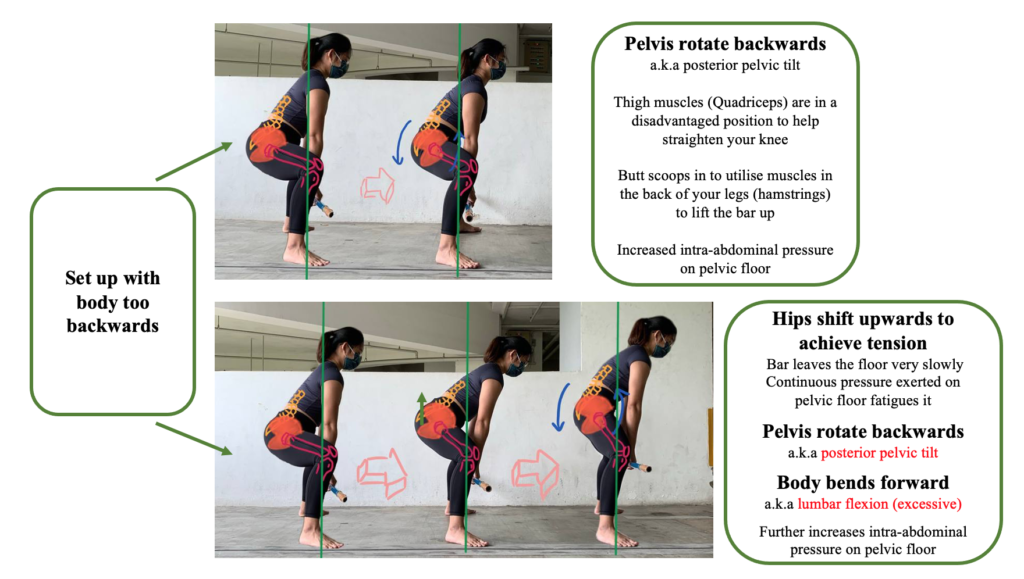
As you grind to lock out for all instances above, the continuous pressure exerted on the pelvic floor causes it to fatigue, which often results in leaking (mid-lift).
By now you should have this ingrained in you: It is about increases in intra-abdominal pressure and the demands placed on the pelvic floor when it comes to leaking while lifting. Hopefully, when we reduce the rapid increases in intra-abdominal pressure and demands on the pelvic floor, we can reduce the occurrence of leaking.
So how can we tweak our deadlift to do so?
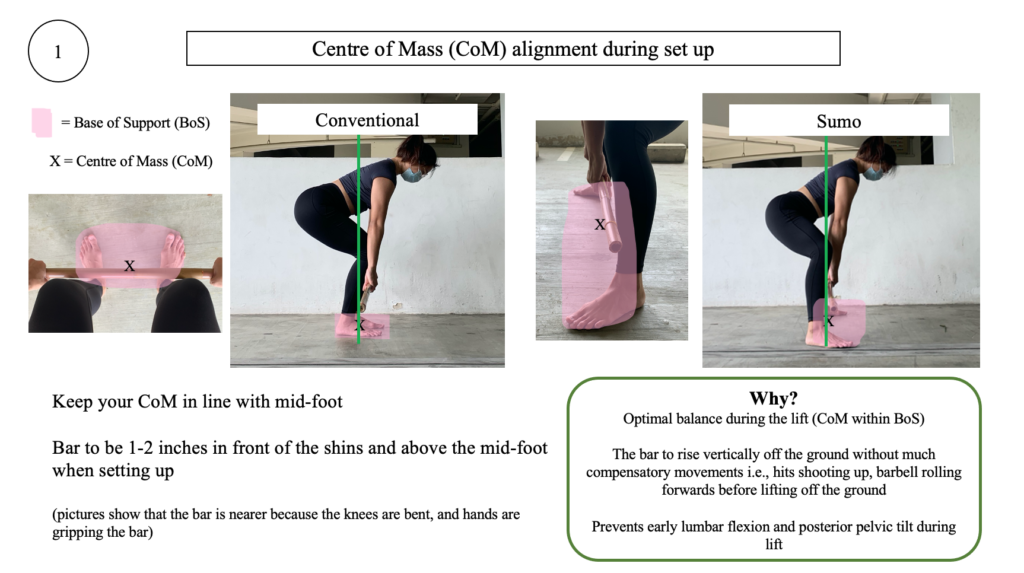
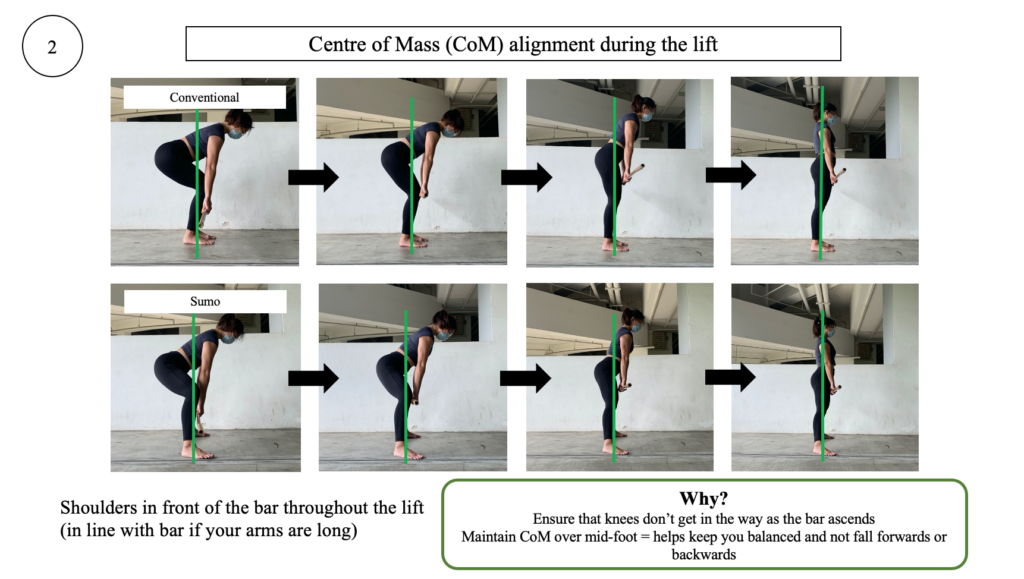
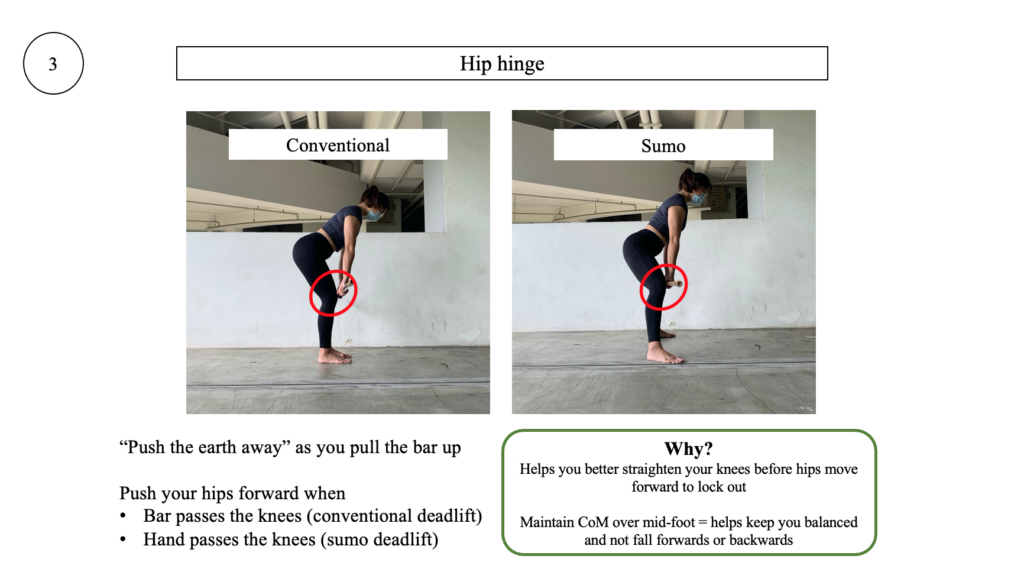
I hope this article could help you in a way or another with regards to your deadlift technique – conventional or sumo.
In the next article, we will be looking at how we can adjust our training programs to help with your lifting technique to reduce large increases in pressure on the pelvic floor overtime. I will also bring light to how sumo deadlifts result in higher leaking occurrences as compared to conventional deadlifts. Although what’s written are merely speculations and deductions based on theory and anecdotes, we hope these articles could spark conversations and interests in the topic to build on existing understanding and improve outcomes.
disclaimers
The strategies suggested here can be used to potentially reduce the occurrences of leaking in your next training session. They are not exhaustive and there are more factors that can contribute to your leaking problems such as non-optimal lifting techniques and training methods (frequency, intensity, volume). We will look into those and discuss them in the next article of this series.
Again, it is important to understand that not all methods listed here are to be added into your routine and that the methods you should be using are dependent on your individual condition. It is highly recommended that you approach a women’s physiotherapist to assist you in selecting the best method. The purpose behind each method is described and whichever method you’d like to try out on your own is up to your discretion.
All illustrations here are not drawn to scientific scales and measurements. They are drawn to exaggerate the explanations in a manner that we hope readers can relate to while performing the activities.
acknowledgements
We would like to thank Julia Hlaing (a.k.a @pelvicstrong on Instagram) for her input in this article. She is a women’s health and musculoskeletal physiotherapist from Sydney, Australia with a focus on pelvic related conditions amongst athletic females. She is also very competitive in an array of different sports from powerlifting to bikini modelling, having won the 2016 and 2018 ANB Swimsuit Pro. It is our pleasure to have Julia contribute to this article series to help women in powerlifting.
Sources
- Nuckols, G. (2016). How to Deadlift [Ebook] (1st ed., pp. 22-35). Retrieved from https://www.strongerbyscience.com/how-to-deadlift/
- ENSŌ Beginner Series: The Deadlift. (2020). [Blog]. Retrieved from https://www.ensopowerlifting.com/post/ens%C5%8D-beginner-series-the-deadlift

